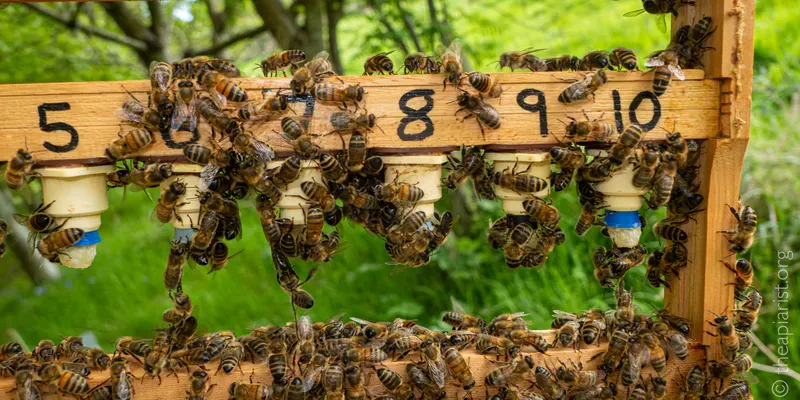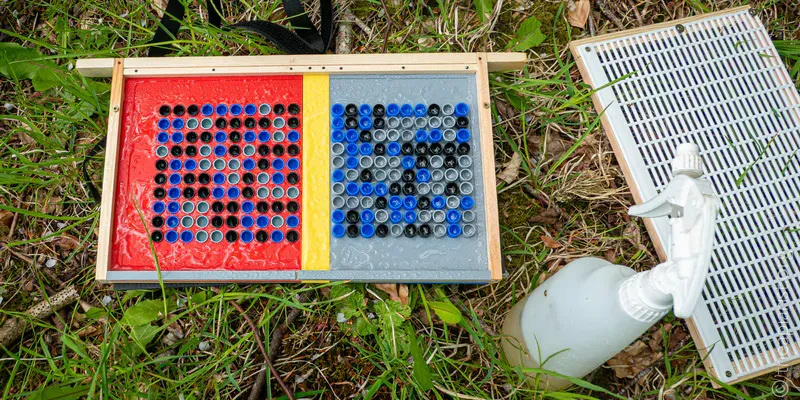Swarms and queens

What a difference a year makes.
This time last year I did almost all my beekeeping 150 miles from home, enduring over eight hours of driving, overcrowded ferries and cheap hotels, to spend time in the apiary.
Where it was usually raining.
Now I drive 10 minutes down the road, with the only delays being caused by the occasional tractor, partridge or hare, and can be home again for tea.
And the sun is shining.
Consequently, I've spent a lot more time beekeeping than I have driving … and a lot more time beekeeping altogether 😄.
It's helped that the weather has been unusually good. The trees, hedgerows, and acres of oil seed rape are flowering, and the bees have been having a bonanza. Brood boxes are rapidly filling with nectar, and colonies not given ample space have started making swarm preparations.
Or, as you'll see shortly, are already long gone.
Unsurprisingly, the conditions have been almost ideal for my first forays into queen rearing for the season, all of which have been focused on the use of oversized cell cups to rear 'bigger, better, queens'.

So, this week I'm going to discuss some observations on swarms and some — very preliminary, but very encouraging — results on how I'm trying to rear bigger, better, queens.
Or a better way to rear bigger queens.
You get the idea.
This post is for sponsors of The Apiarist. Sponsorship costs £50 per year, or a little more per annum if you'd prefer to pay monthly, and ensures independent bee-related writing appears in your inbox every Friday, while helping offset the time I spend researching and writing these articles.